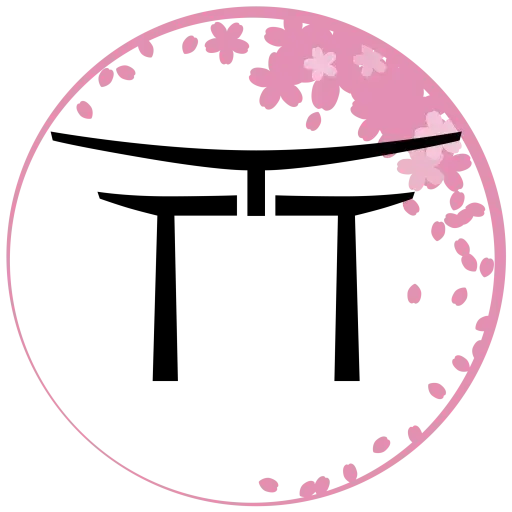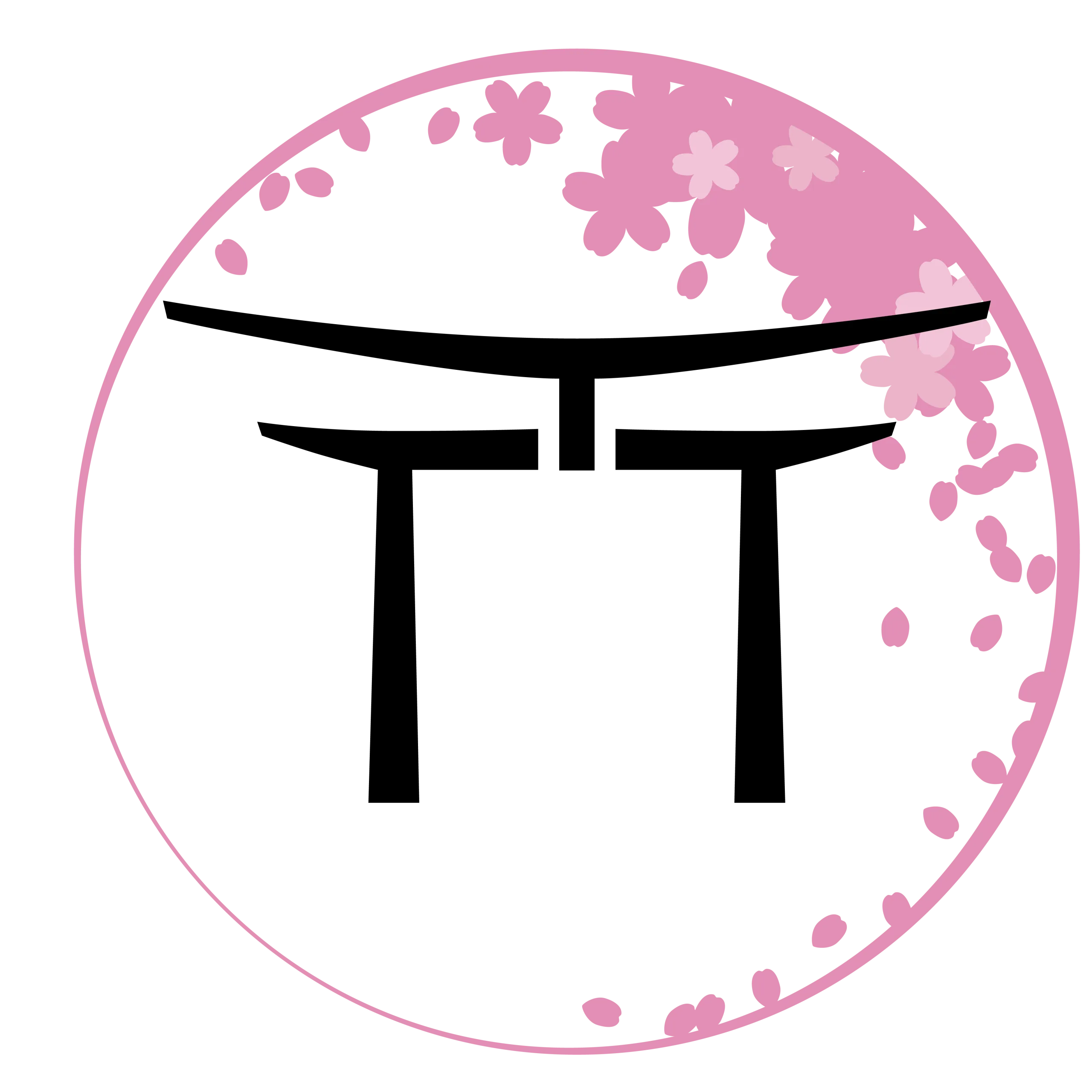Daycare Entrance Ceremony, Narashihoiku, and the Renrakucho
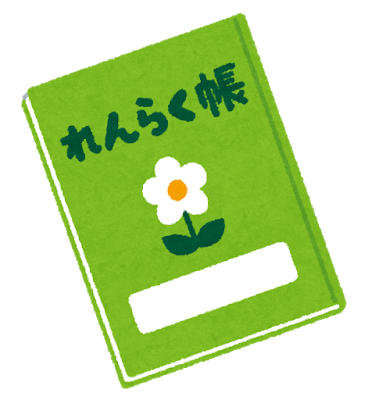
Last Updated on September 10, 2024 by Kay
This post may contain affiliate links, meaning I may earn a small commission on any purchases through those links at zero additional cost to you. Whatever I make goes to keeping this website running and I am forever grateful for the support. See my Privacy Policy for more information.
The third part of my series on daycare in Japan looks at the entrance ceremony as well as narashihoiku (慣らし保育) and the renrakucho (連絡帳).
Just as a refresher (or in case you haven’t read the previous two parts of this series), my daughter started daycare at a chiikigata hoiku (地域型保育) when she was 8 months old in April. Chiikigata hoiku is a small daycare that has less than twenty children under the age of three.
This particular daycare is government-authorized but privately run by a company (shiritsu hoikuen). As she was 8 months old at the time, she was enrolled in the under 1 (zero-sai) class, which is called the ひよこぐみ (chick class) at my daughter’s daycare.
If you haven’t already, you can read the other two parts of this series below:
Applying to Daycares (Hoikuen) in Japan
Preparing for Daycare in Japan
Table of Contents
The Entrance Ceremony (入園式)
As my daughter started daycare on April 1st, there was an entrance ceremony (入園式 or nyuuenshiki) for the children who were starting daycare and a 進級式 (shinkyushiki) for children who would be coming back and moving up to a new class/group.
However, due to COVID-19, the ceremony was not held like usual, instead consisting of families coming at different times and having their picture taken at the entrance. We never really got to meet the other families or babies, although we did see two families briefly, one while we were waiting and another while they were waiting for us to finish.
As this wasn’t a formal entrance ceremony, my husband and I wore jeans and dressed Baby A fairly casually as well. However, the family before us were dressed quite formally with both parents, as well as the child, in suits. The mother after us was more casual, wearing a matching outdoorsy sweater vest with her daughter. If this was a more formal ceremony I suppose I would have worn one of my nicer dresses for work to stay on the safe side.
This was also a chance for us to meet the teacher who would be in charge of the zero sai class. The teacher in charge of a class is called the 担任の先生 (tannin no sensei). She was new to the daycare so there was a lot she didn’t know (and still doesn’t know, to be honest) but as we would soon find out, she was great with kids.
At the entrance ceremony, we also received items from the daycare for our daughter, which included a small backpack, a bag to take home her laundry from daycare, a pouch for her medication and the renrakucho (連絡帳).
Thankfully at this daycare we are not required to haul our daughter’s dirty diapers home at the end of the day (perhaps another thing to inquire about when considering daycares). As mentioned earlier, though, we need to take home some items every Friday that need to be laundered, specifically a blanket, a sheet, and a hat.
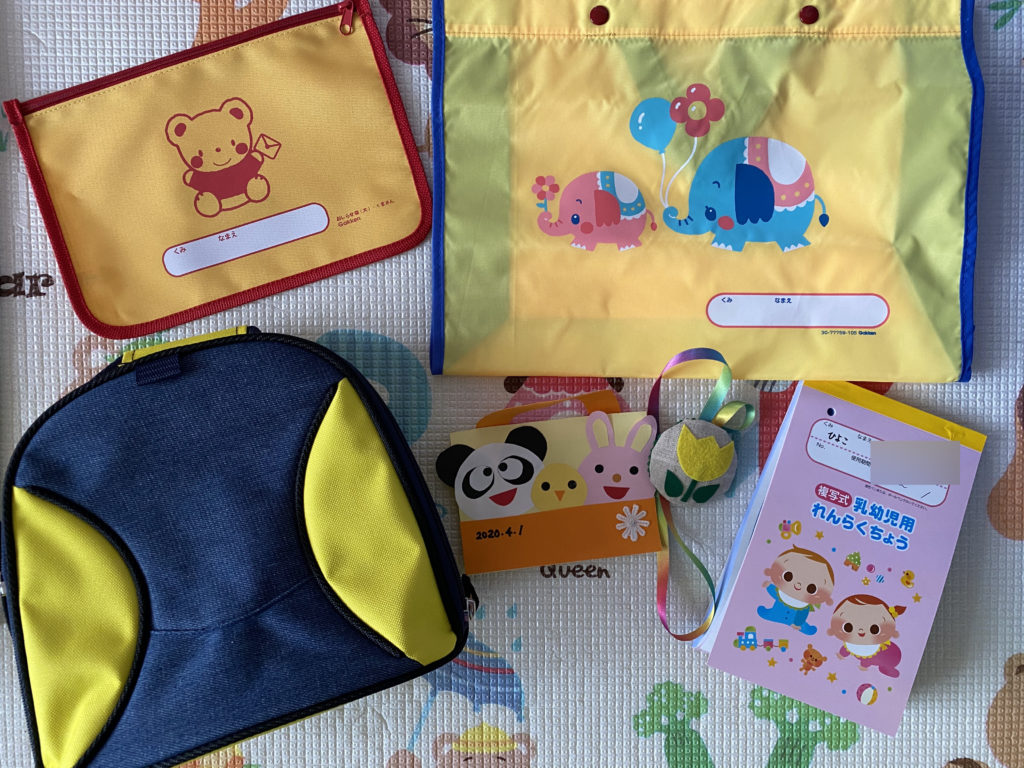
慣れ保育/ 慣らし保育 (Narehoiku or Narashihoiku)
Being separated from Mom and Dad and put into the hands of strangers is incredibly stressful for children, especially when they’re very young. Therefore, to help them gradually get used to daycare, Japanese daycares typically have something called 慣れ保育 (narehoiku) or 慣らし保育 (narashihoiku). My daughter’s daycare calls it narehoiku but as it seems that narashihoiku is more common, I’ll be going with that.
During narashihoiku, children attend daycare for a shortened amount of time, usually starting with an hour or two. Their time at daycare then gradually increases until it reaches a full day over the course of one to three weeks, depending on the daycare. At my daughter’s daycare, narashihoiku is two weeks long.
If you are planning on going back to work, this is absolutely something you should check with both your daycare and employer about as due to the narashihoiku schedule, you (and/or your partner) won’t be able to work full-time for the first two weeks your child is in daycare.
Some mothers choose to go back to work after narashihoiku is over and I was recommended by my HR to do the same; however, due to multiple important deadlines at the beginning of April, I chose to go back to work while my daughter was in narashihoiku, taking days off in the beginning as there was no point going to the office for such a short period of time, and then using a special paid leave provided by my company so that I could leave early to pick her up when she started staying at daycare longer. On some days my husband took paid leave to pick up our daughter if I was too busy. It’s also important to know that if your child is having trouble getting accustomed to daycare after the narashihoiku period ends, it may be extended.
Due to COVID-19, my daughter actually ended up having to redo the first two days of narashihoiku as the daycare was closed for a month and a half shortly after she started at the beginning of April. During the time the daycare was closed we still had to pay the full amount for daycare (in cash, so my husband had to go there); however, we were refunded.
The following was my daughter’s narashihoiku schedule for June, when the daycare reopened:
Date | Time | Activities |
1 (M) | 8:30 – 11:00 | -morning drink, going for a walk outside and playing in the park |
2 (T) | 8:30 – 11:00 | -morning drink, going for a walk outside and playing in the park |
3 (W) | 8:30 – 11:00 | -morning drink, going for a walk outside and playing in the park |
4 (T) | 8:30 – 12:00 | -morning drink, going for a walk outside and playing in the park -first lunch! |
5 (F) | 8:30 – 12:30 | -morning drink, a walk and playing in the park -lunch |
8 (M) | 8:30 – 12:30 | -morning drink, a walk and playing in the park -lunch |
9 (T) | 8:30 – 14:30 | -morning drink, a walk and playing in the park -lunch -afternoon nap |
10 (W) | 8:30 – 15:30 | -morning drink, a walk and playing in the park -lunch -afternoon nap -snack |
11 (T) | 8:30 – 16:30 | -morning drink, a walk and playing in the park -lunch -afternoon nap -snack |
12 (F) | 8:30 – 16:30 | -morning drink, a walk and playing in the park -lunch -afternoon nap -snack |
*Note that if it was raining, the kids were not taken outside.
On the first day of (going back to) daycare, my daughter cried when my husband dropped her off (as she did back in April when I dropped her off and sobbed myself) but was perfectly fine when he picked her up. The next day she didn’t cry after being dropped off and this has continued up until now, so about a month and a half into daycare.
However, it’s important to note that all children are different in how they adapt to daycare. For instance, a friend’s daughter who is two months older than mine and a much more calm baby cried during the majority of narashihoiku. There is also the possibility that your child might get sick. Our daughter did end up catching a cold from daycare but this was a little after one month of attending and she got better quite quickly.
The tannin no sensei gave us updates as to how our daughter did when we picked her up but we also got to see photos along with a short summary of her activities on the daycare’s smartphone app. Although I wasn’t a fan of putting my daughter in daycare to begin with (especially during a pandemic) and miss her very much while at work, I can’t deny the positive impact it has had on her development.
Baby A gets to play with some of the older girls in the other classes and they adore her, so I think she really likes the attention, especially as she hasn’t been able to meet with other babies or children due to the pandemic. She also gets to play with new toys, make different arts and crafts, listen to stories, and dance to music, which provides her with a lot of stimulation.
Right before she went back to daycare in June, she took her first steps at home at 10 months old and was soon stomping around the house with the confidence of a tiny tyrant after only two weeks of daycare. She never fell on her face or back even once!
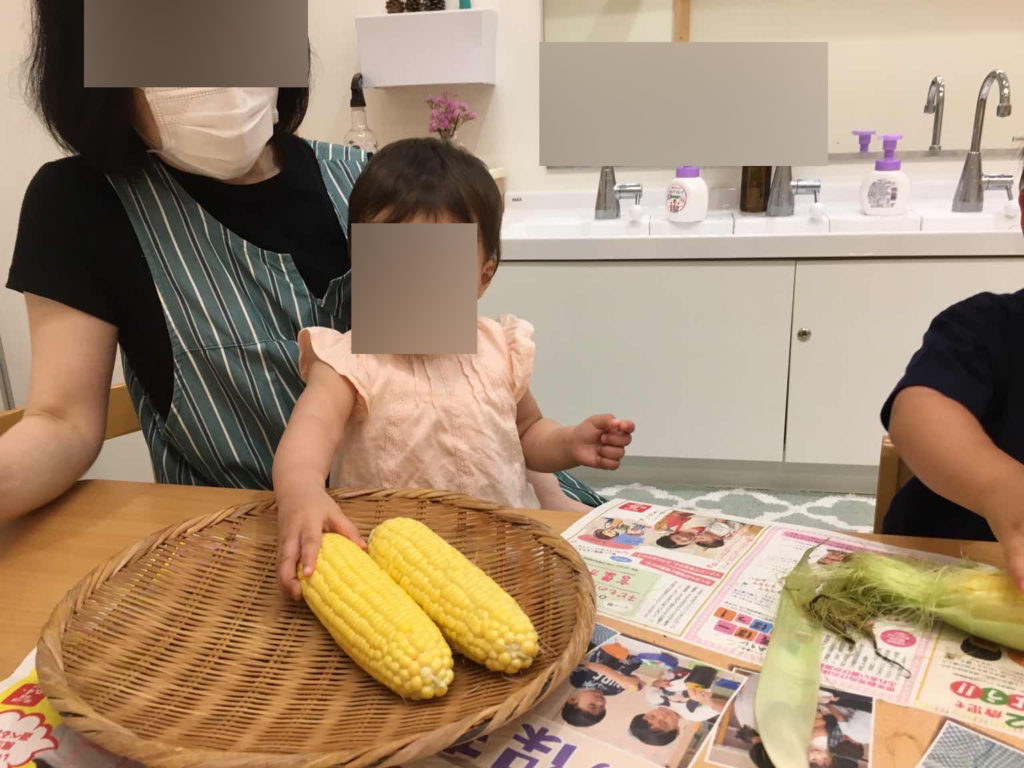
Examining fresh corn for the first time
One important thing we learned during narashihoiku was that we were giving our daughter formula too many times a day, which made it hard for her to eat solids as she was too full (not to mention formula is sweet so she preferred it to solid food). So we were asked to give her formula only twice a day — after breakfast and after dinner.
I was worried she would be too hungry but it has gone rather smoothly and she eats a lot more now than she did before she started daycare. She’s just turned a year old and is down to one bottle a day, which she’s given right before bed. She also gets something to drink, like mugicha, throughout the day.
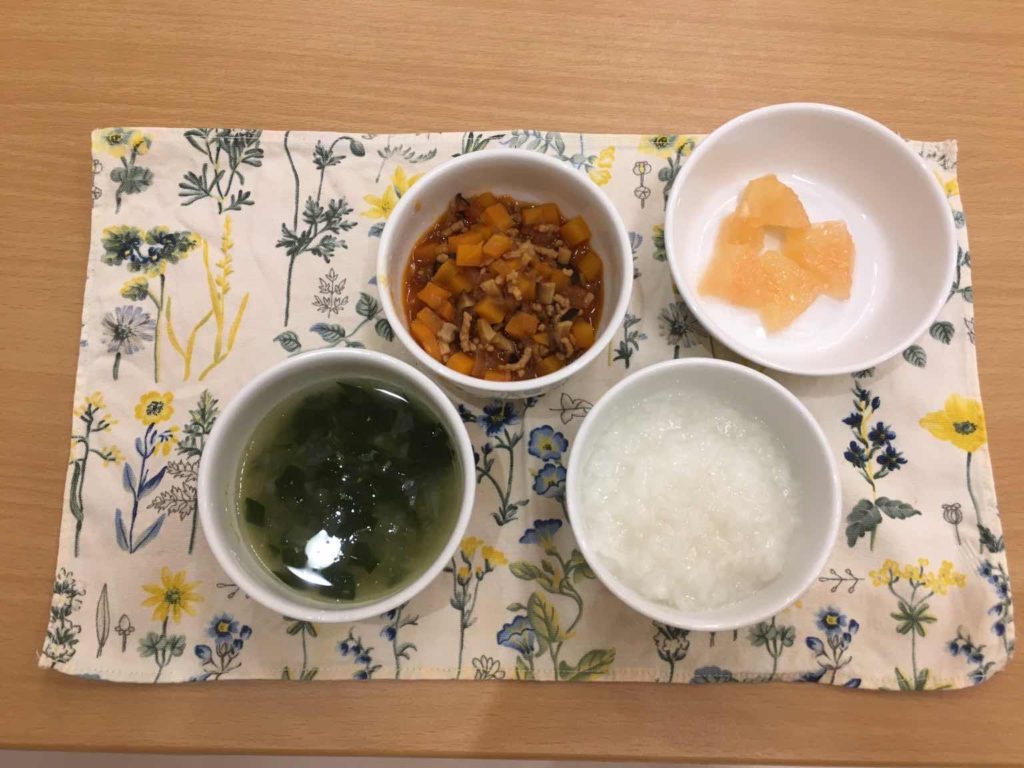
The first lunch she got at daycare, which was on her fourth day of narashihoiku: simmered pork with tomato, dashi soup with spinach, rice porridge, and grapefruit.
連絡帳 (Renrakucho) — An Essential Tool for Communicating with the Daycare
Renrakucho means “communication book” and is an important tool used by daycares and parents to keep each other updated on what is happening with a child. We are required to fill this out every weekday so that the daycare knows what our daughter ate, how long she slept, etc. We can also write notes to the daycare in case there’s something we want to address or inform them about and they will usually discuss it with one of us when we pick up our daughter.
The renrakucho we received had an example of how a completed page may look like, which I’ve posted below. I’ve also translated the contents into English so that it’s a bit easier to understand as there’s a lot of information that needs to be filled out. (Please note that the information on what the child ate and did are not exact translations and more of an explanation/short summary due to space constraints.)
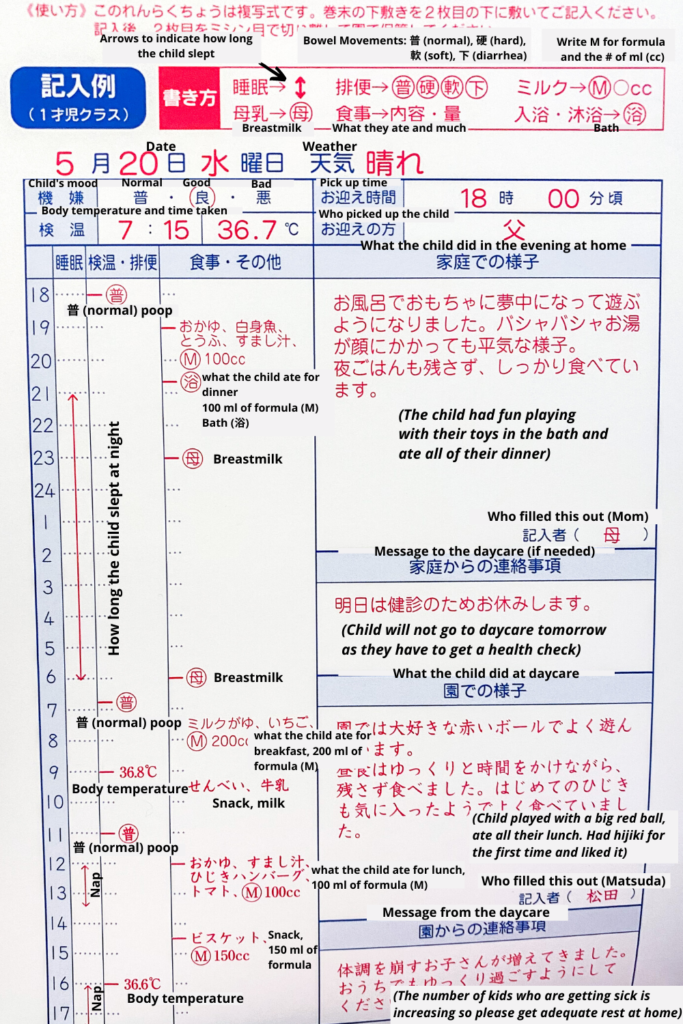
As you can see above, this particular renrakucho looks at:
- The child’s mood before they go to daycare (機嫌 / kigen)
- Their temperature and time taken before they go to daycare (検温 / kenon)
- What time they were picked up from daycare (お迎え時間 / omukae jikan)
- Who picked them up (お迎えの方 / omukae no kata)
- When they slept and for how long (睡眠 / suimin)
- Body temperature and bowel movements (検温・排便 / kenon・haiben)
- Meals, etc (食事・その他) / shokuji・sono ta)
- What they did at home (家庭の様子 / katei no yousu)
You can write as much or as little as you want in this section but the more the better as this is a great chance to share how your child behaves outside of daycare and anything new they experienced. My husband and I write about what my daughter does when she gets home from daycare, such as reading and stomping around holding plastic bottles (despite all the toys she has), but we also share information about her eating something new or if she’s having difficulty with anything so that the daycare is aware and we can get advice. - Any messages for the daycare (家庭からの連絡 / katei kara no renraku)
This is usually where you write any concerns you may have with the daycare or your child, if your child is not going to attend daycare the next day, etc. If we have nothing in particular we need to share, we leave it blank or write 特にありません (toku ni arimasen). - What the child did at daycare (園での様子 / en de no yousu)
Although the example in this area talks specifically about the child at daycare, some teachers may comment on what you wrote in the 家庭の様子 section and give advice if necessary. - Any messages from daycare (園からの連絡 / en kara no renraku)
This is where the daycare will share any important messages they have, such as reminders to bring forms, clothes, diapers, wipes, etc., or to inform you about something they noticed about your child, such as a scratch or rash on their body. The daycare will also respond to anything you wrote in the 家庭からの連絡 section here (although my daughter’s daycare also discusses anything we wrote in the 家庭からの連絡 section when my husband or I pick up our daughter).
The date can be kind of confusing but as an example, if you are sending your kid to daycare on Wednesday, May 20 (which will be the date you write on the page), you want to start filling out the page from the night before, so the evening of the 19th (Tuesday). Their mood and temperature should be filled out in the morning before they go to daycare, so in this example that would be May 20th. Of course, you can just write everything the morning you send them to daycare but I found with getting everything ready, it was just easier to start the night before.
As not all daycares are the same in Japan, there are various kinds of renrakucho that require different information, some less detailed and some more. Furthermore, not all daycares use paper renrakucho. In fact, ours has an app where you can fill out information, which is really nice because you don’t have to worry about writing kanji by hand.
However, my daughter’s tannin no sensei prefers to use the paper version and since my husband is actually forgetting how to write kanji (and I’ve avoided it because I am lazy), we aren’t going to argue with her and are doing it the old-school way.
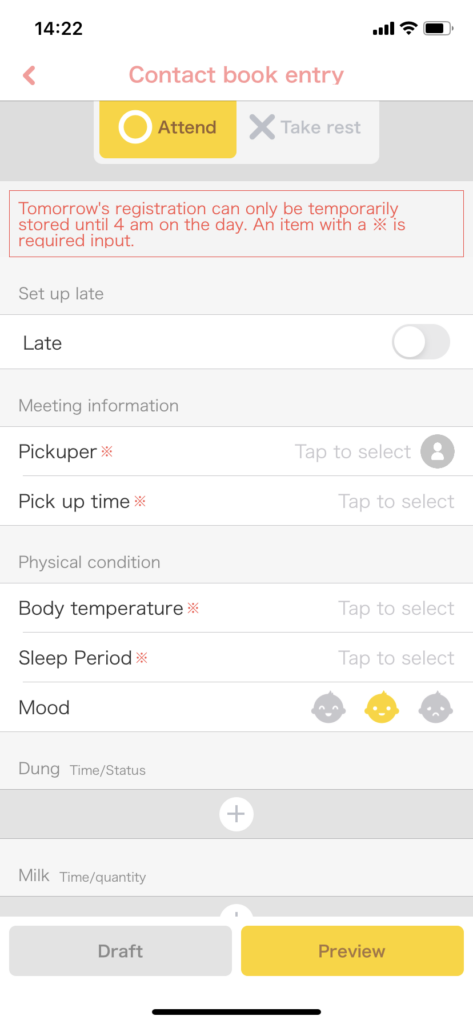
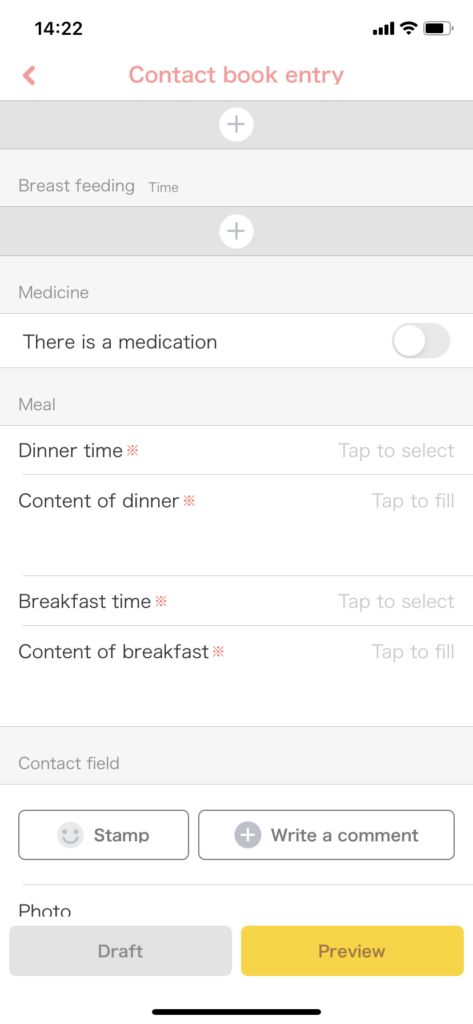
My friend’s daughter’s daycare in Saitama (also shiritsu) doesn’t even have a paper renrakucho and only uses the app, although she said when her daughter attended a different daycare (kouritsu), the renrakucho consisted of papers stapled together, so there seemed to be quite some variation.
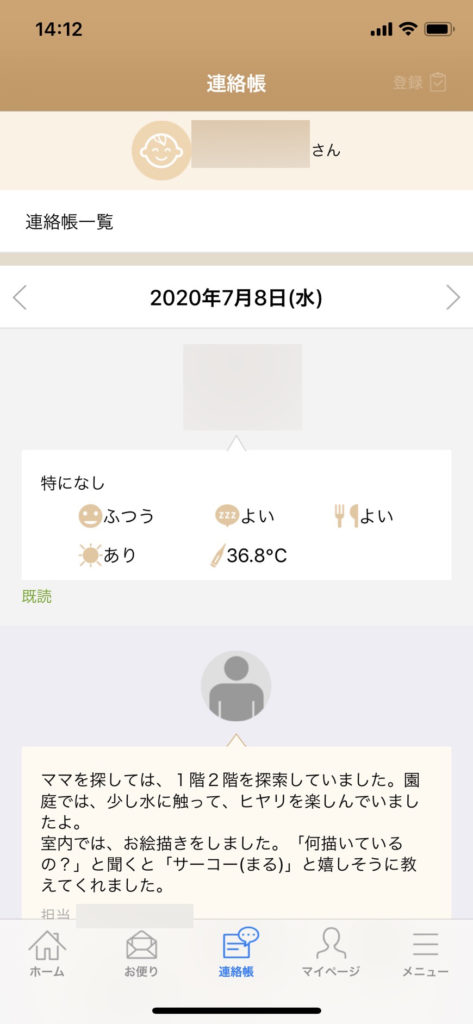
If you’re having trouble with how or what to write in the renrakucho in Japanese, this site is really useful, and not only provides great information in English but also in Chinese and Korean. I’ve also written an article about helpful Japanese phrases when it comes to communicating with teachers at daycare and preschool.
As much as I love reading about what my daughter did at daycare and how much she ate and napped, it can be a bit time-consuming and annoying to have to fill out the renrakucho by hand every night and morning at home, especially if your ability to write kanji is horrible like mine. However, it is undeniably good practice and although it has only been a month and a half, I like looking back to see what I wrote about my daughter.
Maybe she’ll like reading it as well when she’s older.
Want to know more about daycare in Japan? Then you might want to check out these other articles!
